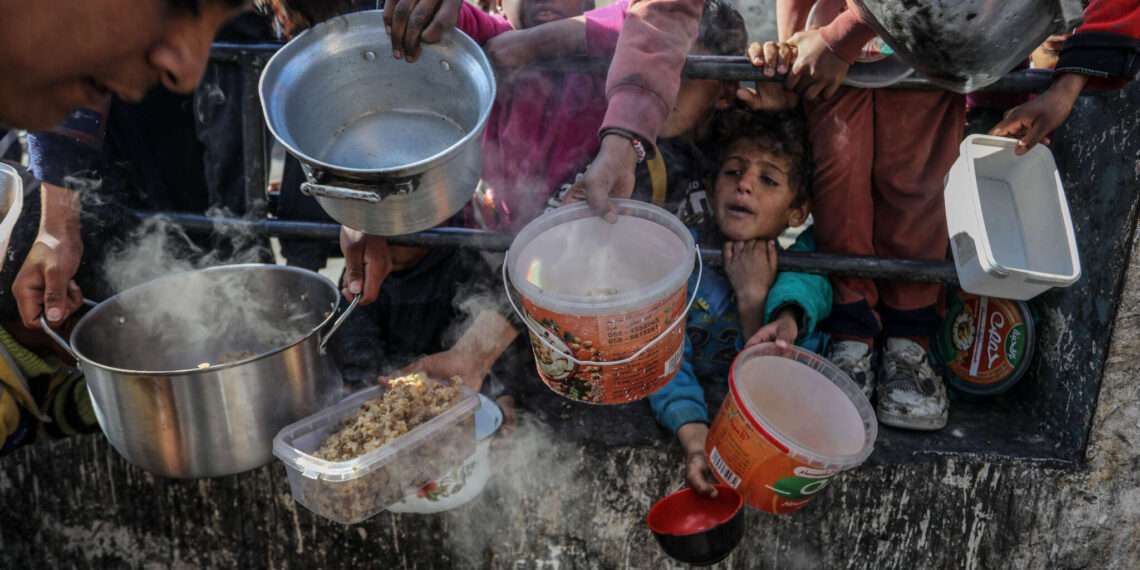Malnutrition and starvation have been the order of the day in Gaza for some time now. As the echo of hunger grows louder each day, individuals are resorting to consuming animal feed in a desperate bid for sustenance.
Getting humanitarian aid through Egypt to Gaza takes quite a long time and have become a very difficult process.
Many trucks have had many problems entering Gaza because they did not meet the Israeli government’s requirements, and many aid items have been damaged as a result of Israeli inspections.
According to UNRWA, the number of aid trucks entering the Gaza Strip has dropped by half in February compared to January.
This leads to the search of a better option, a solution that can be a melody that silences the roar of hunger in Gaza.
A number of airdrops of aid has been made in Gaza and they are quicker in reaching people than aid from trucks.
Nonetheless, can airdrops, often hailed as saviors in times of crisis, truly stand as an enduring alternative to feed Gaza’s 2.3 million hungry mouths?
According to the World Food Programme (WFP), airdrops are a “last resort” for a number of reasons, including the “relatively small quantities” that can be delivered compared with a convoy of trucks.
Airdrops require a team on the ground to help prevent injuries by ensuring the drop zone is clear and to help distribute the aid once it is received, according to the International Committee of the Red Cross (ICRC).
The distribution of airdropped aid could be difficult in northern Gaza, where even UNRWA says it is no longer able to provide services due to Israeli attacks and a general breakdown in social order amid severe hunger.
ICRC analysis also notes the importance of delivering humanitarian assistance in-person as a way to restore “hope and dignity through contact with the world.”
While airdrops can provide immediate relief, they are not a panacea for the underlying issues that contribute to Gaza’s food crisis. The root causes, especially the ongoing war between Hamas and Israel, as well as restricted access to resources, demand a more nuanced and sustainable approach.
Airdrops, by their nature, are limited in scale and frequency and may not address the structural issues that perpetuate the cycle of hunger.
The Israeli army said that “160 packages of food and medical equipment were airdropped into southern Gaza” as part of a joint mission with the US, the UAE, Jordan, Egypt and France.
According to a news agency, U.S President Joe Biden’s administration is considering airdropping aid from U.S military planes into Gaza.
The news agency cited American officials saying that airdrops will have a limited effect since a military plane can only drop the amount of supplies equivalent to that transported by one or two trucks.
Canada also disclosed that it is working to airdrop aid to the Gaza Strip as soon as possible.
International Development Minister, Ahmed Hussen said Ottawa was exploring new options to deliver aid. He said that the provision of airdrops in partnership with like-minded countries in the region, such as Jordan, was on the table.
Hussen said last week that the provision of aid is nowhere near what is needed and a tedious inspection process was slowing down the movement of supplies brought in by truck.
Humanitarian Airdrops Help Israel’s “Blockade Strategy”
Jeremy Konyndyk, the President of Refugees International, said that the amount of aid delivered in airdrops is so “negligible” that it helps “perpetuate the overall blockade strategy.”
“Facilitating airdrops – and driving media coverage around them – gives the public appearance that Israel is cooperating with humanitarian efforts,” said Konyndyk, who is also a former USAID official.
“But ensures that the amounts of aid getting in are negligible enough to still perpetuate the overall blockade strategy,” he added.
“The fact that they need to be considered is a major policy failure,” he said in a post on social media.
READ ALSO: GAWU Projects Food Prices to Remain High Until June 2024





















